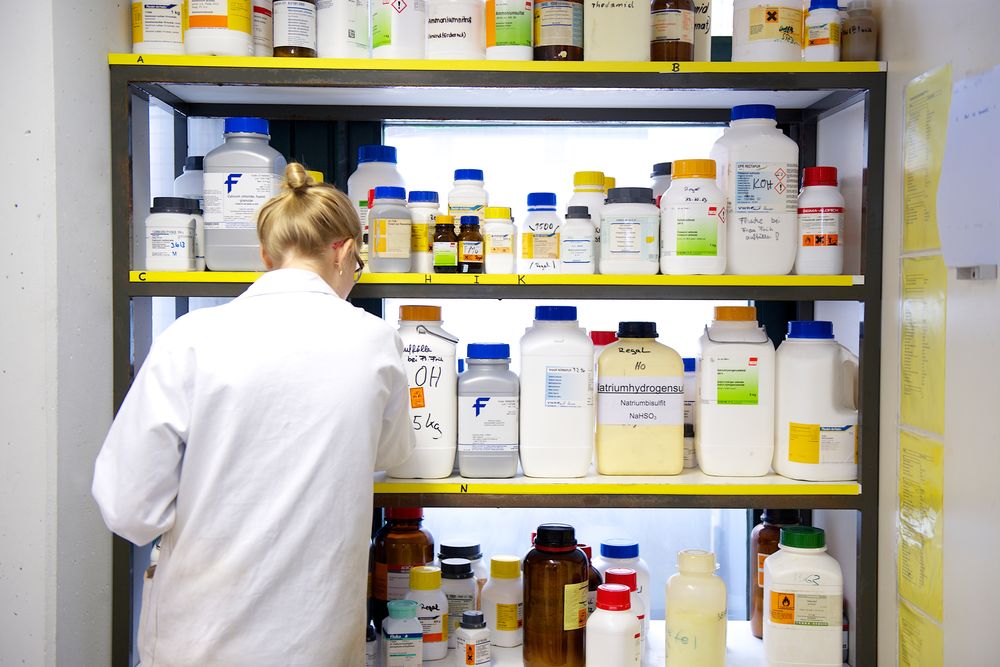
Joining forces to improve chemical risk assessment
The University of Konstanz is one of 199 partners from 28 countries and 3 EU agencies teaming up to improve chemical risk assessment in Europe – including a reduction and replacement of animal testing.
How can the European Union and its members reduce exposure to hazardous chemicals and their impact on health and the environment? Which new methods can be used to assess chemical risks more reliably and, preferably, without animal testing? These are some of the questions addressed by the European Partnership for the Assessment of Risk from Chemicals (PARC), which started on 1 May 2022.
The partnership brings together almost 200 research institutions and health agencies from 28 countries – including the University of Konstanz. For a funding period of seven years, PARC receives approximately €400 million from the European Commission and the participating partner countries. It is coordinated by the French Agency for Food, Environmental and Occupational Health & Safety (ANSES). Researchers from the University of Konstanz support the programme with their expertise in animal-free New Approach Methodologies (NAM) for risk assessment and in regulatory toxicology.
Filling knowledge gaps – without animal testing
On 14 October 2020, the European Commission adopted an EU Chemicals Strategy for Sustainability. One of the planned measures according to the official press release: “Putting in place an EU research and innovation agenda for chemicals, to fill knowledge gaps on the impact of chemicals, promote innovation and move away from animal testing.” This is exactly where the subfield of PARC, to which the researchers at the University of Konstanz will make a decisive contribution, comes in.
In Konstanz, the working group of Marcel Leist, Professor of In Vitro Toxicology and Biomedicine at the University of Konstanz and Co-Director of the Center for Alternatives to Animal Testing in Europe (CAAT-Europe), develops and applies NAM-based test batteries that are able to identify toxicological properties of drugs and food constituents. Within PARC, these methods will be further refined to allow their use in regulatory settings – i.e. when the data have an impact on the market access of chemicals and on the definition of the limits of safe exposure for the general population or in various work environments.
The focus of the methods provided by the group in Konstanz will be on the potentially toxic effects of chemicals on the nervous system (neurotoxicity) and on the health of unborn children (developmental toxicity). "We will conduct several case studies that will show the performance and reliability of NAM for providing data to regulatory agencies”, says Marcel Leist.
First results are already available
The so-called “cruelty-free methods” developed at the University of Konstanz have already been used by the European Food Safety Authority (EFSA) or the US Environmental Protection Agency (EPA). The presently available test battery captures many different aspects of neurotoxicity. For instance, information is gained whether toxicants inhibit the formation of a neuronal network or whether they rather affect various functions of an already formed network. "Within PARC, we will continue to use this test battery to collect data on the hazards of compounds that are of particularly high concern in the European Union. Some of these compounds are suspected to affect the hormonal system or to alter the gene expression in the brain. New test systems need to be developed and implemented to test for these effects", Marcel Leist outlines.
Altogether, the methods in the project will all be based on the use of human cells instead of animal models. As the new methods allow many more tests to be performed than traditional approaches, also mixtures of environmental chemicals can be studied. With this activity, PARC will contribute to the Green Deal's “Zero Pollution Action Plan”. In addition, the project results will be highly beneficial to other end-users, for example from the industry, as the developed in vitro methods are fast, reliable and cost-effective. "Thus, multiple benefits for various stakeholders will result from the regulatory implementation of the assays, be it through the reduction of animal testing, the identification and regulation of hazardous substances, or – ultimately – the public health benefits that will arise", concludes Marcel Leist.
Key facts:
- The University of Konstanz is a member of PARC – the European Partnership for the Assessment of Risk from Chemicals.
- Research focus in Konstanz: development of cruelty-free New Approach Methodologies (NAM) for the assessment of the neurotoxicity of chemicals
- PARC brings together 199 partners from 28 countries and 3 EU agencies. It receives funding from the European Commission and the participating partner countries. The total budget is approximately €400 million.
